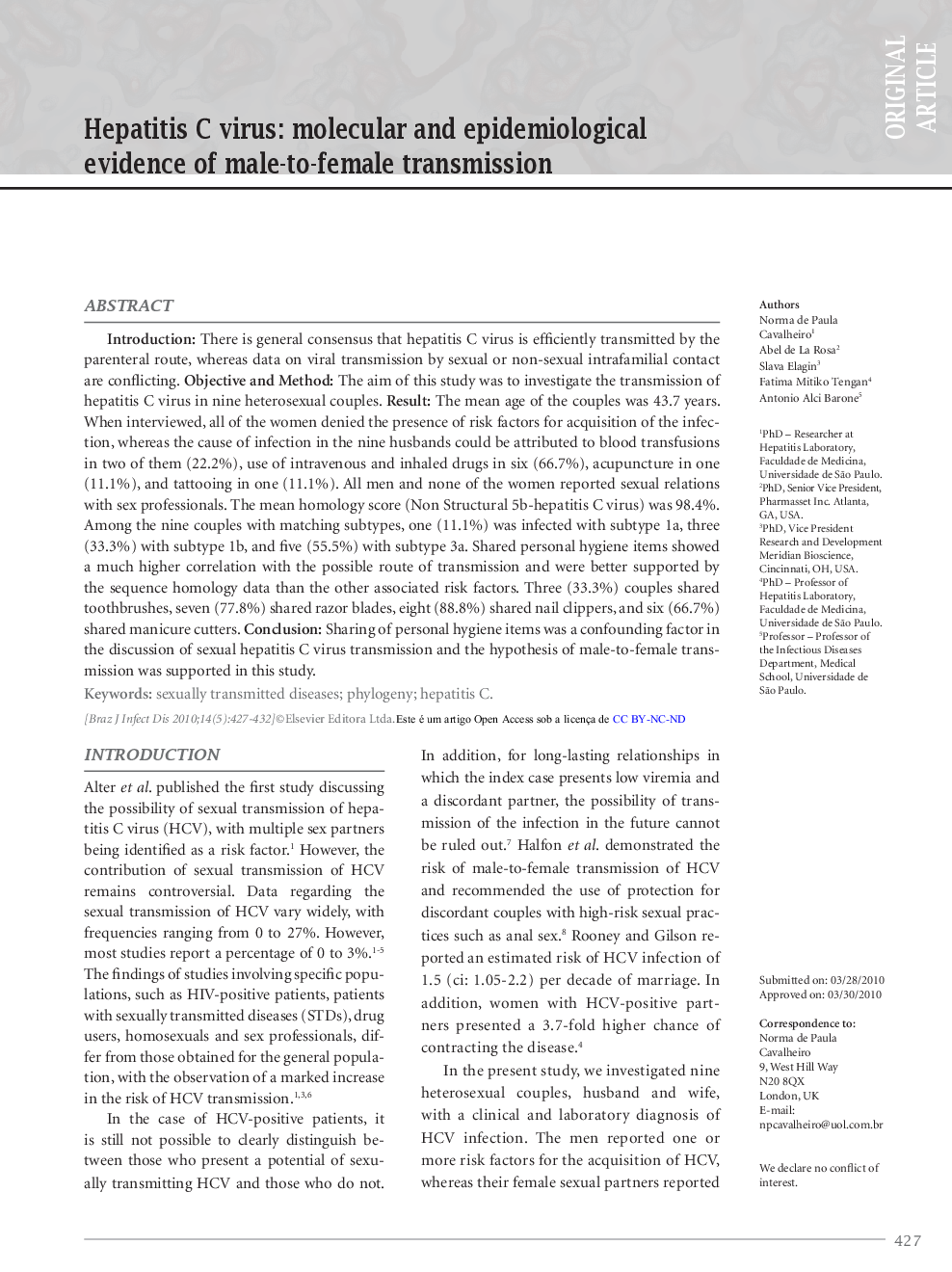| Article ID | Journal | Published Year | Pages | File Type |
|---|---|---|---|---|
| 3344627 | The Brazilian Journal of Infectious Diseases | 2010 | 6 Pages |
IntroductionThere is general consensus that hepatitis C virus is efficiently transmitted by the parenteral route, whereas data on viral transmission by sexual or non-sexual intrafamilial contact are conflicting.Objective and MethodThe aim of this study was to investigate the transmission of hepatitis C virus in nine heterosexual couples.ResultThe mean age of the couples was 43.7 years. When interviewed, all of the women denied the presence of risk factors for acquisition of the infection, whereas the cause of infection in the nine husbands could be attributed to blood transfusions in two of them (22.2%), use of intravenous and inhaled drugs in six (66.7%), acupuncture in one (11.1%), and tattooing in one (11.1%). All men and none of the women reported sexual relations with sex professionals. The mean homology score (Non Structural 5b-hepatitis C virus) was 98.4%. Among the nine couples with matching subtypes, one (11.1%) was infected with subtype 1a, three (33.3%) with subtype 1b, and five (55.5%) with subtype 3a. Shared personal hygiene items showed a much higher correlation with the possible route of transmission and were better supported by the sequence homology data than the other associated risk factors. Three (33.3%) couples shared toothbrushes, seven (77.8%) shared razor blades, eight (88.8%) shared nail clippers, and six (66.7%) shared manicure cutters.ConclusionSharing of personal hygiene items was a confounding factor in the discussion of sexual hepatitis C virus transmission and the hypothesis of male-to-female transmission was supported in this study.
